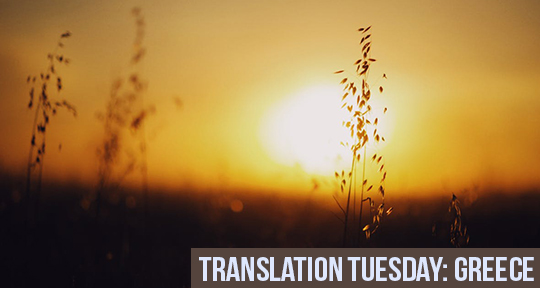“She was confirming her existence through pain.” With these words, Greek writer Evgenia Bogianou vividly illustrates the mind of her unnamed narrator, a small girl playing a field at the edge of town, only moments away from witnessing an encounter that will mark her for the rest of her life. Watching a man from her village make love to an unknown woman, the injured girl begins to discern the pain inherent to all desire, the wound in her knee giving way to the lifelong wound of love itself, ever present and impossible to satisfy. Rendered here in a luminous translation by Gina Scarpete Walters, this story is sure to leave you, like its narrator, caught in an impossible position: wanting to persist in a moment that must surely end. Read on!
Ν. was playing in the empty lot. She had scraped her knee, fresh blood on top of the scab. Her hand rebelliously scratched the wound. She felt pleasure from it even though she was in pain. Sometimes, the wound hurt so much that she felt the pain all the way to her head. N. wasn’t worried. She made sure that her body, her knee and everything else was hers, that’s why they hurt. She was confirming her existence through pain, despite the fact that the only thing she was doing was scratching the wound.
The empty lot was just outside the village, in an uninhabited area. If she could, N. would stay there until dawn, scraped knee and all. It was spacious there. In the village, everything was cramped—voices could be heard, the roofs were low and hung to the ground, cutting off the air, cutting off the light. But in the empty lot, the light was abundant. In the afternoons, the light fell sideways on the low fields of grass. In those moments, the grass ceased to be grass and the light, unimaginably brilliant, ceased to be light; it became something else.


